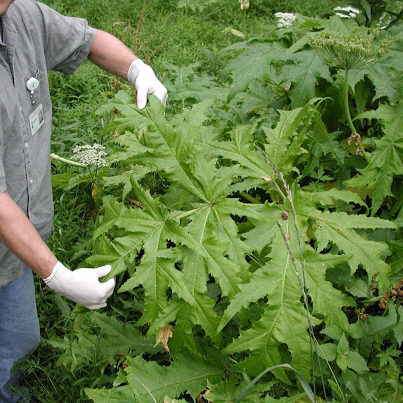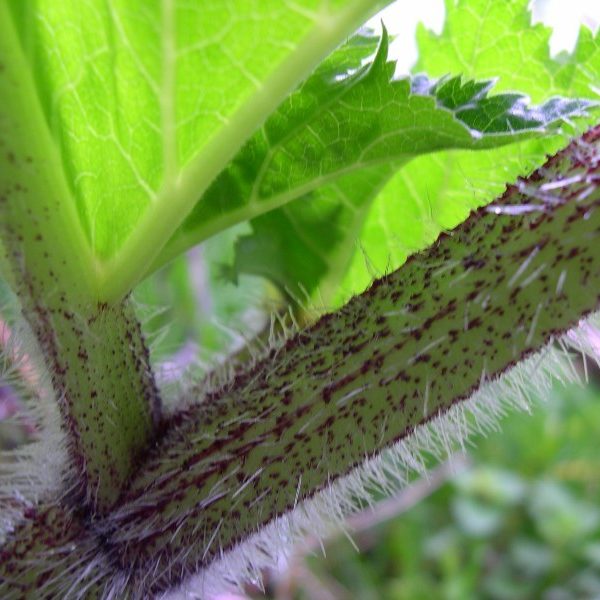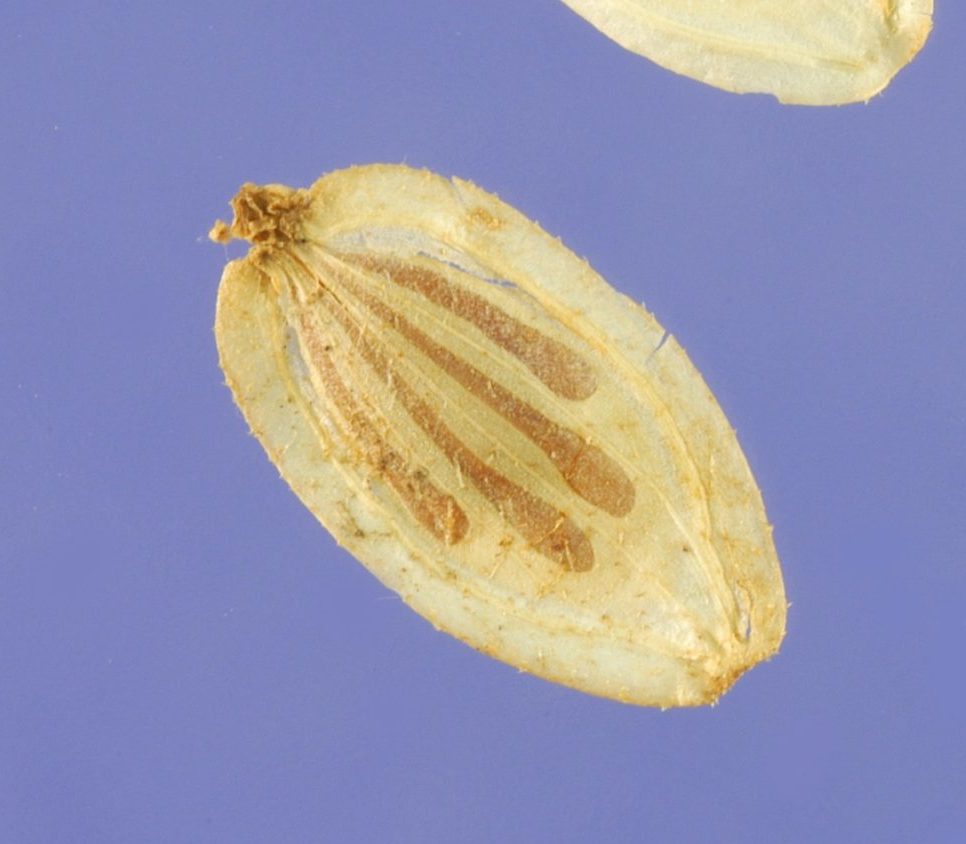Giant Hogweed or Heracleum Mantegazzianum is an invasive plant that originated from Russia and Georgia. It was introduced to the UK as an ornamental plant in the 19th Century. Giant Hogweed in the UK has been traced from the Royal Botanic Gardens Kew Seed list in 1817. The plant escaped from cultivation, with the first UK wild plant being recorded in Cambridgeshire.
The invasive plant is closely related to cow parsley, which can be seen through their similar appearances. Over the years it has gained a reputation for potentially causing harm to humans. It can also outcompete other plants due to the enormous sizes it can reach.
It has some very distinct features which make it identifiable to the trained eye. There are a variety of different hogweed species throughout the UK which it can be mistaken for. Here are some of the features to help you identify Giant Hogweed:

The huge leaves can reach sizes of 1.5m in width and 3m in length. They look similar to rhubarb leaves and have jagged edges. The underside will also have small hairs.

Green in colour with purple blotches. They have a hollow core and can reach heights between 8-14ft. The steam also features coarse white hairs.

The flowers are small and white in colour. They sit in umbrella-style clusters that face upwards. These clusters reach diameters of 60cm, making the flowers seem larger than they are. You can expect to see these in June-July.

Flat and oval in shape, they have a brown/tan colour and reach around 1cm in length.
It can be seen growing in a variety of locations across the UK. Its most common location for colonising is around water sources such as rivers and streams. The plant also thrives in moist soils so you can expect to see it growing near roadsides, railway lines, waste grounds, trees line, or wooded areas.
The plant uses seeds to spread. It can take up to 4 years for the plant to flower, after which the plant will usually die off. A flowerhead can have 5,000 seeds, with the whole plant producing between 50,000 – 80,000 seeds. The seeds are usually shed between August – October. Once in the soil, a seed can remain active for up to 15 years!
The seeds can be spread through different transport sources such as humans, animals, or rivers.
The plant produces a sap called Furocoumarin. The sap can make human skin extremely sensitive to sunlight. If you get Giant Hogweed sap on your skin and are exposed to sunlight you can experience blistering and burns which can cause long-term scarring. Due to the potential for injury, you should wear protective clothing when handling or working closely with the plant.
Yes, it is an offence to cause Giant Hogweed to spread in the wild in England and Wales as set out by The Wildlife and Countryside Act 1981. If you are found guilty of spreading the plant you can be fined or could even be sent to prison for up to 2 years.
When you are looking to dispose of Giant Hogweed it becomes a controlled waste. If the material is taken off-site it must be disposed of at a licenced landfill and a waste transfer note will need to be documented for the material.
There are several ways in which you can eradicate Giant Hogweed from development sites. If you are looking to eradicate the plant from your site you should act before June as it is unlikely seeds will be present, reducing the risk of spreading the plant.
The most effective method is to remove the plant and excavate the contaminated area. It is important to dig to a depth of 6 metres because Giant Hogweed seeds can remain active in soils for 15 years. Digging to these depths ensures that all seeds are removed from the site. The removed plant and contaminated soils will need to be sent to a permitted landfill site by a registered waste carrier.
You can bury plant waste on your land, but you need to get permission from the Environment Agency before you do so. If you do not have a permit allowing you to bury the waste material, you must meet the conditions in ‘Treatment and disposal of invasive non-native plant: RPS 178’. You must inform the Environment Agency a week before you intend to bury.
The plant waste can be burnt on site. You must inform the Environment Agency with 1 week’s notice and you must also inform your local environmental health officer. If a business intends to burn the waste, it must have a registered waste exemption or an environmental permit.
If non-chemical control is not suitable then the use of chemical controls such as herbicides can be used. You must only use herbicides that have been stated by the HSE. For successful eradication, you may need to use chemical controls for a few seasons. This will ensure that the plant has been completely eradicated from the site.
When using chemicals you must:
If you require disposal of soils contaminated with Giant Hogweed rhizomes (stems), we have partnered with permitted disposal sites. we aim to always give a local option for invasive plant soils at competitive rates. Get in touch on 0161 647 7409 or info@gmat.co.uk